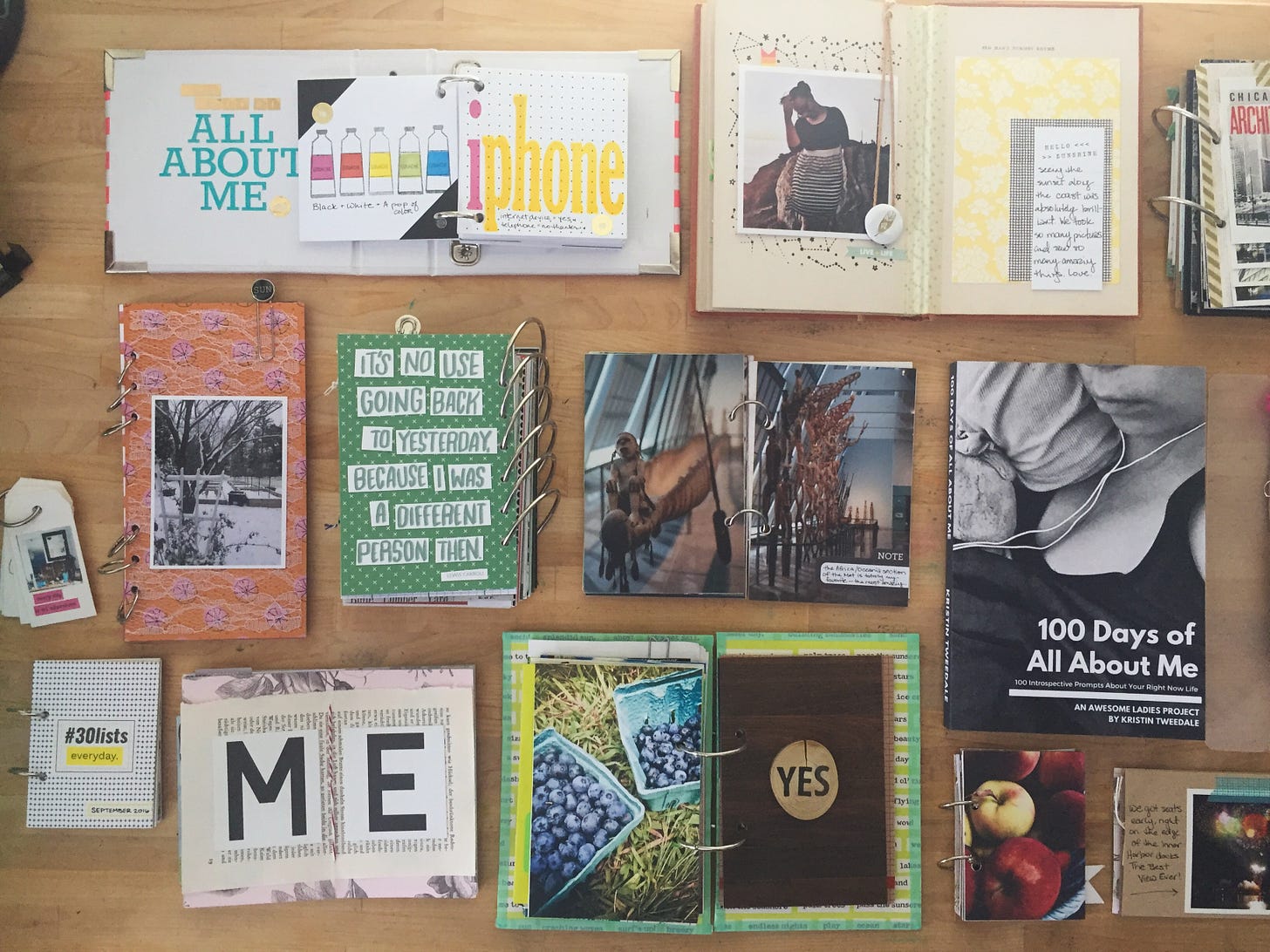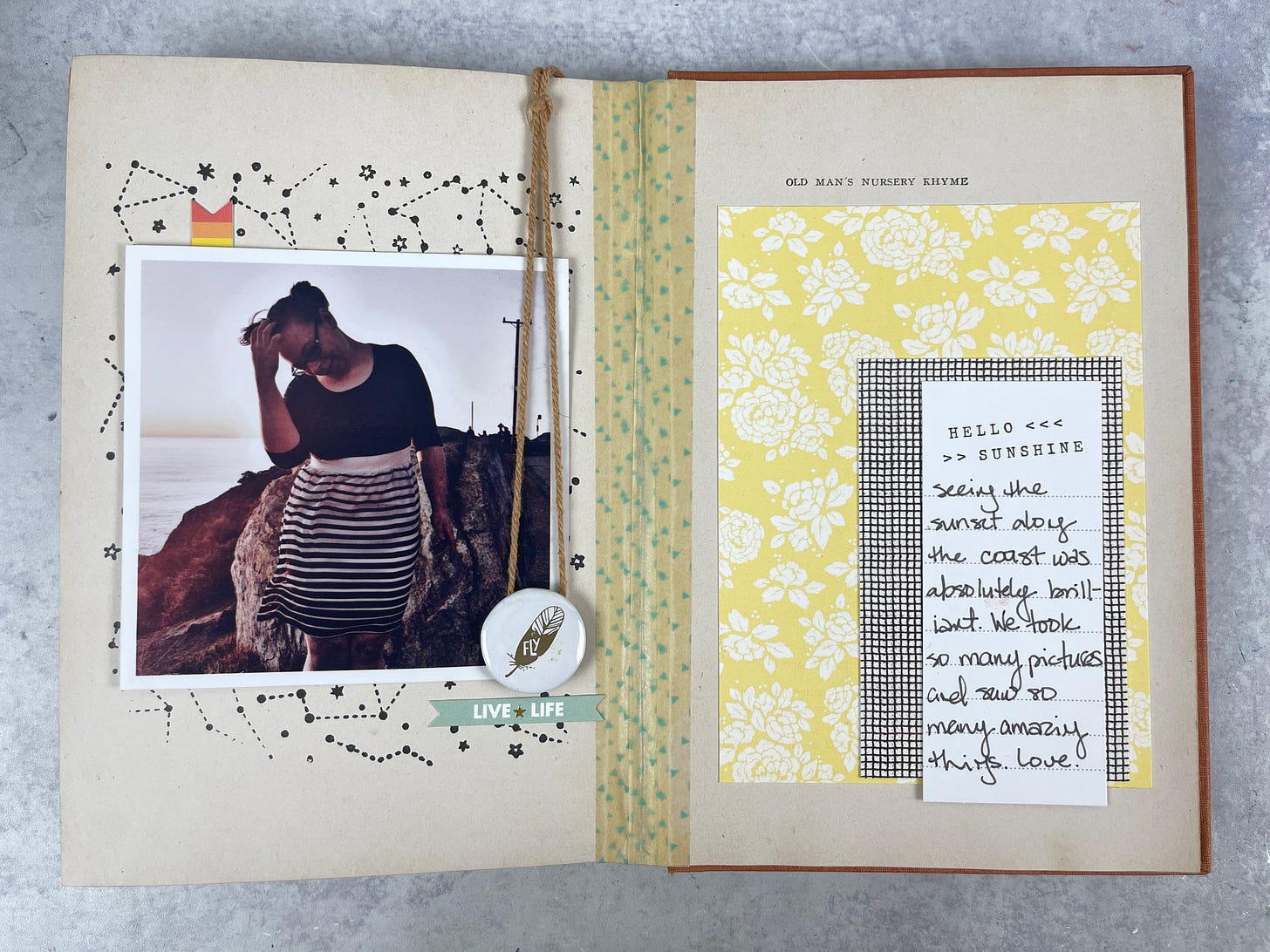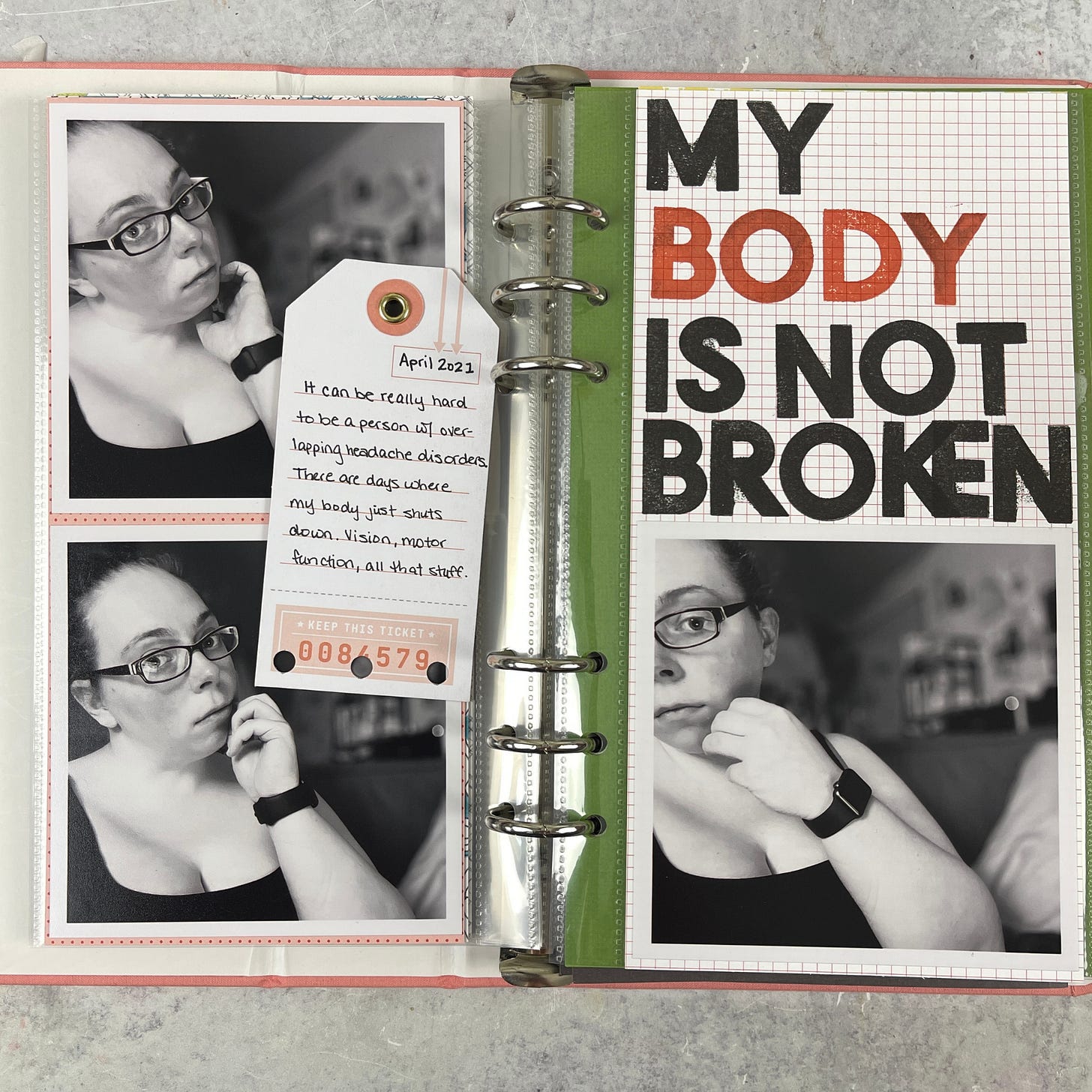Everyday, Introspective, Adventure: Tell Amazing Stories with Joy and Ease
With some brief notes on architecture, and a worksheet!
I’m all about making it easier for you to scrapbook your stories. Hell, I’m all about making it easier for me to scrapbook my stories. One of the ways I do that is by creating frameworks around some of the things that I think about most.
So much of our lives are big and complicated and a bit muddled. Frameworks give us a guide to help us see through the chaos and break things down into core components.
Think about it visually. If you’re building a house, you have to have a set of blueprints. In one glance, a blueprint will let you see both the big picture and the smaller building blocks that you need to put together to create that picture. We’re trying to figure out the blueprints and the patterns in our world that help us understand how things are connected.
The framework I’m using the most right now is the Three Types of All About Me story.
When it comes to your stories, almost 99% of them will fall into one of the three following categories.
Everyday stories
Introspective stories
Adventure stories
Knowing which category your story fits into will make it easier to plan out your project. And furthermore, you might even find that you physically document these three categories differently from one another. I definitely do.
My everyday stories are scrapped in Daily Pages and 6x8 albums with lots of pictures.
My introspective stories have fewer photos, so I focus more on art + creativity.
My adventure stories are almost always in their own mini-books, so I can give those stories their own space and explore the details.
Let’s dive into each of these story types individually:
Everyday
Everyday stories are the most straightforward of the three types. These are the stories of our day-to-day lives. Our routines, our habits, and the things that we get up to on a regular basis.
For some people that’s going to be a lot of stories about family. For others that might be stories about work, friends, your everyday routines, or other stuff that happens in your everyday life.
Everyday stories are great at capturing details that often get lost when we only focus on the big life-altering events. Topics like your home, your job, your favorite meals or places to hang out are all great examples of everyday scrapbooking stories.
For me -- everyday stories go in two places:
My Chronological Scrapbook: Right now I’m using a 6x8 album with pages dividers for each month. I’ll tell lots of stories about the things we get up to around the house, including the garden, food stories, and whatever season we’re in at home.
Daily Pages: It’s a great place to document all those little details that are never going to make it into my bigger scrapbook pages. Whether that’s a tiny story that I wouldn’t remember otherwise, or a specific detail of a larger story that I didn’t have room for elsewhere. I love Daily Pages for documenting the everyday.
Introspective
Introspective scrapbook stories are all about the stories inside your head. They’re the meta-stories of the scrapbook world. We’re talking about things like: your favorite color (or favorite anything, really), things you’re grateful for, what you believe about yourself (or the world), and so much more. These stories aren’t set in a specific time or a specific place; instead, they’re more about our thoughts, feelings, and emotions.
While, introspective scrapbooking is about stories that look inward. But inward doesn’t always mean deep stories about passionate things (it totally can), but it can also be about pop culture, music, favorite books, and whatever else makes you who you are!
Telling an introspective story is great for when you’ve got something to say that isn’t grounded in a specific photo, or a single moment. Maybe you want to document the playlist you’re listening to right now, or the best things about your house or the television shows you’ve been marathoning.
For me -- introspective stories go in a few places:
Book of Me: Every year I create a new Book of Me album, and most of the pages that I put into that album are introspective or dealing with the ways that I think and feel about things.
Daily Pages (again): There is so much introspective stuff that I get out in my Daily Pages. And it’s so great to be able to write down 1-2 sentences about how I feel, and let that be enough. Currently List is a great way to start being a little more introspective, and I fill out a Currently List in my Daily Pages every Monday.
Adventure
Adventure stories are all about the big moments. Whether it’s a trip away from home, birthday/holiday celebrations, graduations, first day of school, or anything else that feels big for you. Adventure stories are ones that you celebrate and tell all your friends and family about how exciting it was.
Of the three types of all about me stories -- I think that adventure stories benefit most from a chronological storyline; here’s what happened first, then here’s what happened after that, and then this final thing happened, the end.
Wedding stories, baby’s first-year, vacation (or staycation) stories - all great examples of adventure stories we scrapbook. Some of your adventure stories might not feel outwardly all that adventurous (maybe you went out to a play or a fancy dinner or accomplished something big at home or work), but this is about your life. And no matter what anyone says, even the relatively big moments in your life are an adventure and deserve to be celebrated.
For me -- adventure stories wind up in a few different places.
My Chronological Album: Smaller adventure stories (visit to IKEA, day trips, finishing a cool project) go into my chronological album. I love having the mixture of mostly everyday stories, with some of the bigger moments included in my album. It does a great job of really telling the story of the year.
Mini (and not so mini) Books: Bigger adventures almost always get their own albums. Whether that’s a mini-album (lots of weekend trips), or a full sized album (my Scotland album is 7x9 with 3” binder rings -- definitely not a mini anything) depends on the project itself. I love creating stand-alone albums for adventure stories because that’s usually when I take the most photos, and I love having a place to put all the best photos.
There are always going to be a few stories that don’t seem to fit comfortably into the framework. You’ll have stories that definitely overlap between two categories, as well as scrapbook-worthy stories that don’t really fit into any one of these. But this is a resource for you to start thinking about the different types of stories you want to scrapbook, and the decisions you'll have to start making when you want to start creating.
Thinking about your stories with this framework helps you get to the fun and creative part faster. Even more importantly, it lets you stay in the creative and fun part for even longer stretches at a time, giving you the opportunity to create something really magical.
I’ve been using this framework for almost a decade, and it still feels so relevant. When I’m planning out my projects and stories, this framework is exactly where I start. Thinking about my stories this way, and understanding how I like to tell each category of story, makes my creative life so much more enjoyable and prolific. I’m not standing over my desk wondering where this story goes, or how I get started.
Not having to worry about structural questions means that when I go to create my pages, my brain can chill in the creative zone. And I can stay there, without having to go back and use a totally different part of my brain for problem solving. It keeps me in the flow, and when I’m in the flow, I create things I love.
I still love scrapbooking and telling my stories, I do it in my spare time, even though it’s my full-time job. I owe so much of that to frameworks like Three Types of All About Me, because it makes it easier for my brain to do the structural and planning work separately from the creative work.
Let’s go back to our house -- an architect puts in a lot of hard work to create a set of blueprints. Those blueprints then get passed off to people doing completely different work -- the construction foreman does the physical building, the interior decorator comes in and works on making it beautiful and interesting.
We would never expect these three people to try to do their work at the exact same time. The construction foreman can’t build the house if there are no finished instructions, the interior decorator can’t decorate a house if they don’t know what it looks like.
So how can we expect our brain to do multiple different kinds of work at the same time? We can’t. It’s just not really a thing that humans are great at.
It’s so important that you give yourself the time and space to actually do the work that matters to you. And we all have limited time and space. I really hate to use the word efficient1, but that’s what happens. When you break up your whole into smaller chunks, it automatically helps you organize the way you work more efficiently manner. You will get more done, in less time, more easily.
If telling your stories in an organized, thoughtful, and more intentional way is important to you, join me inside Feminist Scrapbook School where we’ve got an epic workbook and video lesson about each one of these three story types. Going through The Storyteller’s Almanac workbook is the best way for you to figure out which stories you want to tell in 2024, and how you want to tell them.
Here’s a sneak peek into the course workbook and one of my favorite worksheets: 2024 Story Goals.
The Story Goals worksheet helps you look at the goals you have for your 2024 stories. I’ve got a little prompt for each type of story in order to help you get started, as well as a little space below for how you’re going to track these goals along the way.
Paid subscribers can access the 2024 Story Goals Worksheet PDF below, as well as a quick video about the worksheet. Print it out, watch the video and get started on planning your 2024 scrapbook stories!
Love you all.
xoxo,
K









